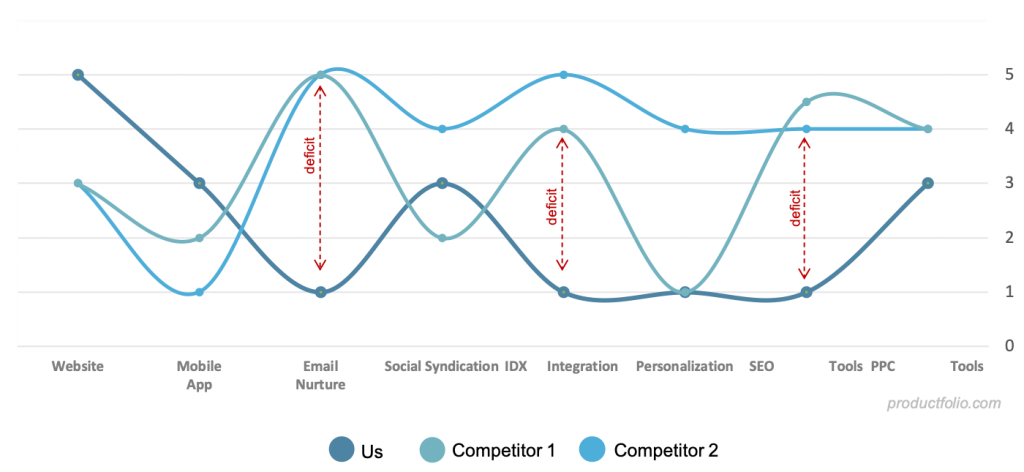Prioritization is something that every good product manager knows how to do. With limited resources available, a Product Manager but must pay more attention to features that offer the most value to both the company and its customers. Because we are selective however, gaps can arise, either because we’re not minding the holistic experience of the product, or because we’re not paying attention to innovation happening in competitive products. These have the potential of harming your product strategy if ignored. You’ll benefit from carrying out a competitive feature gap analysis to see what you can do better.

What is Gap Analysis?
Gap analysis is a review or comparison of the actual to the desired. It compares what exists to what is really needed. In the case of a product, it is used to detect what could be done differently to delight customers.
It is almost always true that you won’t create something perfect from the start. Some users will always find something lacking in your product. It is your duty to identify and close potential gaps that could create opportunities for the competition.
Types of Feature Gaps
When talking about feature gaps, what immediately comes to the minds of many people are missing features. These are practically synonymous with gaps for these individuals. However, missing features aren’t the only ones that can leave a gap in the product strategy.
A few examples are:
Misguided flagship feature – You could create a gap when you focus on the wrong feature as the key one in your product. In this case, you commit a lot of resources to a feature that users don’t want or consider useful and then focus most of your marketing campaigns on it.
Persona mismatch – A feature gap can be created when you build your product for an inapt persona. An example would be adding a data compliance feature after you noticed a lot of interest in the content you produced on the topic – but the people reading or viewing your content might not be your main targets.
Buzzword trap – This refers to gaps created by trying to keep up with what is trending in your industry. Let’s say you’ve noticed an increase in inquiries relating to a capability. This could lead you to quickly add it to your product. The problem here is that the added capability may not live up to users’ expectations, thereby making them look for another product.
Essentially, product gaps aren’t just about what you left out but also what you chose to add. Here are a few types of gap analysis you might consider to identify gaps to address:
Detecting and Filling the Gaps
You need to first detect feature gaps before you can attempt to bridge them. There are several ways through which you can identify these issues. Let’s take a quick look at some methods along with how they can help to fill the gaps.
Customer-focused analysis
This involves interactions with customers to find out why they are not making purchases. Ask questions to learn whether their expectations were different. Do they have a major reason for not buying? You can create a short survey to send to leads that are not making purchases. While this might not get their business at the moment, it can provide useful information to work on.
Product-focused analysis
The metrics you have for your product can give you hints on where gaps exist. They can enable you to know about user behavior and how users engage with your product. Is engagement according to your expectations? How often do your users engage with what you offer?
Analytics will be useful for identifying product-related gaps. Compare actual numbers to the ones you forecast to get ideas of what you need to improve. For example, if you found that users access a particular feature less often than you expected, that might suggest a gap.
Competitive analysis
This entails assessing how your product compares to those of your rivals. Are customers turning to what the competition offers while ignoring yours? Find out what those other products have that yours lacks.
Good market research will be critical here. It can help you learn more about your target customers and find out what they find appealing in your rivals’ products. Your analysis can enable you to know what features can differentiate your product from others and so attract more customers.
Just Build and Release
At the initial phase of development, you only need to figure out what features are necessary for an MVP and then prioritize. Let not your focus be on creating a perfect product – you’ll be aiming for too much in that case.
No matter how “perfect” you make a product, there will always be customers that have something to complain about. You simply need to build, ship, and listen to the market to learn and determine what comes next. You can identify feature gaps capable of impacting your product strategy and fix them.


